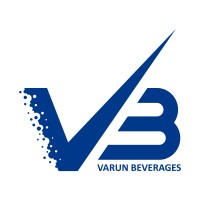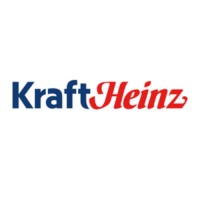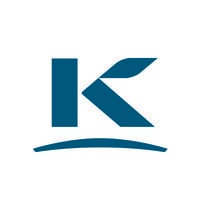
Coca-Cola Bottlers Japan Inc. Company Cyber Security Posture
ccbji.co.jpCoca-Cola Bottlers Japan Inc. (CCBJI, Security Code: First Section of TSE 2579), which has been established through the integration between Coca-Cola West and Coca-Cola East Japan on April 1, 2017, is one of the largest soft drink companies in Japan and the largest Coca-Cola bottler in Asia with sales revenue ranked third out of over 250 bottlers worldwide. We are responsible for manufacturing and selling about 50 brands including “Coca-Cola”, “Coca-Cola Zero”, “Georgia”, “Aquarius”, “I LOHAS”, “Ayataka”, as well as sports drinks, juice, energy drinks, and other carbonated beverages, and deliver high quality and safe products to about 111 million consumers in Tokyo, Osaka, Kyoto, and 35 other prefectures (the South Tohoku, Tokyo metropolitan, Tokai, Kinki, Chugoku, Shikoku, and Kyushu areas). CCBJI aims for further growth of the Coca-Cola business by combining the experience and know-how which each previous bottler has formed over its long history to create new values and work positively with the community.
CBJI Company Details
ccbji
10,001+ employees
0
722
Food and Beverage Services
ccbji.co.jp
Scan still pending
COC_1466486
In-progress
Between 900 and 1000
This score is AI-generated and less favored by cyber insurers, who prefer the TPRM score.
 CBJI Global Score
CBJI Global Score.png)

Coca-Cola Bottlers Japan Inc. Company Scoring based on AI Models
| Model Name | Date | Description | Current Score Difference | Score |
|---|---|---|---|---|
| AVERAGE-Industry | 03-12-2025 | This score represents the average cybersecurity rating of companies already scanned within the same industry. It provides a benchmark to compare an individual company's security posture against its industry peers. | N/A | Between 900 and 1000 |
Coca-Cola Bottlers Japan Inc. Company Cyber Security News & History
| Entity | Type | Severity | Impact | Seen | Url ID | Details | View |
|---|
Coca-Cola Bottlers Japan Inc. Company Subsidiaries

Coca-Cola Bottlers Japan Inc. (CCBJI, Security Code: First Section of TSE 2579), which has been established through the integration between Coca-Cola West and Coca-Cola East Japan on April 1, 2017, is one of the largest soft drink companies in Japan and the largest Coca-Cola bottler in Asia with sales revenue ranked third out of over 250 bottlers worldwide. We are responsible for manufacturing and selling about 50 brands including “Coca-Cola”, “Coca-Cola Zero”, “Georgia”, “Aquarius”, “I LOHAS”, “Ayataka”, as well as sports drinks, juice, energy drinks, and other carbonated beverages, and deliver high quality and safe products to about 111 million consumers in Tokyo, Osaka, Kyoto, and 35 other prefectures (the South Tohoku, Tokyo metropolitan, Tokai, Kinki, Chugoku, Shikoku, and Kyushu areas). CCBJI aims for further growth of the Coca-Cola business by combining the experience and know-how which each previous bottler has formed over its long history to create new values and work positively with the community.
Access Data Using Our API

Get company history
.png)
CBJI Cyber Security News
Refreshing data migration for Coca-Cola Bottlers Japan
Working with a collaborative team drawn from Capgemini and its partners Microsoft, and NetApp, Coca-Cola Bottlers Japan performs one of the largest ...
Major Coca-Cola partner makes bold tech shift that could change beverage production forever: 'We are honored'
A Coca-Cola bottler in a demanding market will optimize its supply chain with AI-powered tech, which could ensure better product ...
Modern supply chains open up cybersecurity weak spots
According to cybersecurity experts, the drinks industry supply chain is a major and growing area of vulnerability for manufacturers with many ...
Top consumer goods company streamlines processes with Power Platform
Capgemini creates dozens of custom business applications to automate arduous processes, enabling the company to focus on high-priority work.
Japan IT Services Market Size, Share & Growth Report, 2030
The global Japan IT services market is expected to grow at a compound annual growth rate of 9.8% from 2024 to 2030 to reach USD 136.81 billion by 2030.
Coca-Cola Bottlers Japan: quenching growth
Coca-Cola East Japan Co (CCEJ) and Coca-Cola West Co (CCW) will merge next April to form Coca-Cola Bottlers Japan Inc. (CCBJI), becoming the nation's largest ...
Coca-Cola Bottlers Japan builds aseptic production line for coffee products
Coca-Cola Bottlers Japan builds aseptic production line for coffee products · Instant coffee that tastes like fresh brew · Go deeper with ...
Stormous ransomware gang claims to have hacked Coca-Cola
The Stormous ransomware gang claims to have hacked the multinational beverage corporation Coca-Cola Company. The Stormous ransomware gang announced with a post ...
The Kit Kat in Japan, a Transliteration Success
Kit Kat's popularity in Japan thanks to word play is not unparalleled. When Coca-Cola first appeared in China in 1927, the company's name was ...

CBJI Similar Companies

VARUN BEVERAGES LIMITED
Varun Beverages Limited (VBL) is one of the top FMCG players in the Indian Market. We are on track towards strengthening our position in the global beverage industry with our presence in 14 countries in the Indian sub-continent and Africa - where we are responsible for producing popular brands like

Kraft Heinz
The Kraft Heinz Company is one of the largest food and beverage companies in the world, with eight $1 billion+ brands and global sales of approximately $25 billion. We’re a globally trusted producer of high-quality, great-tasting, and nutritious foods for over 150 years. While Kraft Heinz is co-head

Greggs
Greggs is a leading food-on-the-go retailer with over 2,400 shops nationwide and serving over six million customers a week. We stand for great tasting, freshly prepared food that our customers can trust, at affordable prices and aim to become the customers’ favourite for food-on-the-go. With ambi

Arca Continental
Arca Continental produces, distributes and sells non-alcoholic beverages under The Coca-Cola Company brand, as well as snacks under the brands of Bokados in Mexico, Inalecsa in Ecuador and Wise in the US. With an outstanding history spanning more than 98 years, Arca Continental is the second-larges

Kerry
Every day, millions of people throughout the world consume foods and beverages containing Kerry’s taste and nutrition solutions. We are committed to making the world of food and beverage better for everyone, and dedicated to our Purpose, Inspiring Food, Nourishing Life. At Kerry, we are proud to

Schincariol
A Schincariol é uma fabricante de bebidas fundada em 1939 em Itu, São Paulo, cidade onde está localizada a sua matriz, a qual abriga um dos maiores e mais modernos parques de produção de bebidas da América do Sul. A companhia possui outras 12 unidades fabris em 11 estados da federação, com capacidad

Frequently Asked Questions (FAQ) on Cybersecurity Incidents
CBJI CyberSecurity History Information
Total Incidents: According to Rankiteo, CBJI has faced 0 incidents in the past.
Incident Types: As of the current reporting period, CBJI has not encountered any cybersecurity incidents.
Total Financial Loss: The total financial loss from these incidents is estimated to be {total_financial_loss}.
Cybersecurity Posture: The company's overall cybersecurity posture is described as Coca-Cola Bottlers Japan Inc. (CCBJI, Security Code: First Section of TSE 2579), which has been established through the integration between Coca-Cola West and Coca-Cola East Japan on April 1, 2017, is one of the largest soft drink companies in Japan and the largest Coca-Cola bottler in Asia with sales revenue ranked third out of over 250 bottlers worldwide. We are responsible for manufacturing and selling about 50 brands including “Coca-Cola”, “Coca-Cola Zero”, “Georgia”, “Aquarius”, “I LOHAS”, “Ayataka”, as well as sports drinks, juice, energy drinks, and other carbonated beverages, and deliver high quality and safe products to about 111 million consumers in Tokyo, Osaka, Kyoto, and 35 other prefectures (the South Tohoku, Tokyo metropolitan, Tokai, Kinki, Chugoku, Shikoku, and Kyushu areas). CCBJI aims for further growth of the Coca-Cola business by combining the experience and know-how which each previous bottler has formed over its long history to create new values and work positively with the community..
Detection and Response: The company detects and responds to cybersecurity incidents through {description_of_detection_and_response_process}.
Incident Details
Incident 1: Ransomware Attack
Title: {Incident_Title}
Description: {Brief_description_of_the_incident}
Date Detected: {Detection_Date}
Date Publicly Disclosed: {Disclosure_Date}
Date Resolved: {Resolution_Date}
Type: {Type_of_Attack}
Attack Vector: {Attack_Vector}
Vulnerability Exploited: {Vulnerability}
Threat Actor: {Threat_Actor}
Motivation: {Motivation}
Incident 2: Data Breach
Title: {Incident_Title}
Description: {Brief_description_of_the_incident}
Date Detected: {Detection_Date}
Date Publicly Disclosed: {Disclosure_Date}
Date Resolved: {Resolution_Date}
Type: {Type_of_Attack}
Attack Vector: {Attack_Vector}
Vulnerability Exploited: {Vulnerability}
Threat Actor: {Threat_Actor}
Motivation: {Motivation}
Common Attack Types: As of now, the company has not encountered any reported incidents involving common cyberattacks.
Identification of Attack Vectors: The company identifies the attack vectors used in incidents through {description_of_identification_process}.
Impact of the Incidents
Incident 1: Ransomware Attack
Financial Loss: {Financial_Loss}
Data Compromised: {Data_Compromised}
Systems Affected: {Systems_Affected}
Downtime: {Downtime}
Operational Impact: {Operational_Impact}
Conversion Rate Impact: {Conversion_Rate_Impact}
Revenue Loss: {Revenue_Loss}
Customer Complaints: {Customer_Complaints}
Brand Reputation Impact: {Brand_Reputation_Impact}
Legal Liabilities: {Legal_Liabilities}
Identity Theft Risk: {Identity_Theft_Risk}
Payment Information Risk: {Payment_Information_Risk}
Incident 2: Data Breach
Financial Loss: {Financial_Loss}
Data Compromised: {Data_Compromised}
Systems Affected: {Systems_Affected}
Downtime: {Downtime}
Operational Impact: {Operational_Impact}
Conversion Rate Impact: {Conversion_Rate_Impact}
Revenue Loss: {Revenue_Loss}
Customer Complaints: {Customer_Complaints}
Brand Reputation Impact: {Brand_Reputation_Impact}
Legal Liabilities: {Legal_Liabilities}
Identity Theft Risk: {Identity_Theft_Risk}
Payment Information Risk: {Payment_Information_Risk}
Average Financial Loss: The average financial loss per incident is {average_financial_loss}.
Commonly Compromised Data Types: The types of data most commonly compromised in incidents are {list_of_commonly_compromised_data_types}.
Incident 1: Ransomware Attack
Entity Name: {Entity_Name}
Entity Type: {Entity_Type}
Industry: {Industry}
Location: {Location}
Size: {Size}
Customers Affected: {Customers_Affected}
Incident 2: Data Breach
Entity Name: {Entity_Name}
Entity Type: {Entity_Type}
Industry: {Industry}
Location: {Location}
Size: {Size}
Customers Affected: {Customers_Affected}
Response to the Incidents
Incident 1: Ransomware Attack
Incident Response Plan Activated: {Yes/No}
Third Party Assistance: {Yes/No}
Law Enforcement Notified: {Yes/No}
Containment Measures: {Containment_Measures}
Remediation Measures: {Remediation_Measures}
Recovery Measures: {Recovery_Measures}
Communication Strategy: {Communication_Strategy}
Adaptive Behavioral WAF: {Adaptive_Behavioral_WAF}
On-Demand Scrubbing Services: {On_Demand_Scrubbing_Services}
Network Segmentation: {Network_Segmentation}
Enhanced Monitoring: {Enhanced_Monitoring}
Incident 2: Data Breach
Incident Response Plan Activated: {Yes/No}
Third Party Assistance: {Yes/No}
Law Enforcement Notified: {Yes/No}
Containment Measures: {Containment_Measures}
Remediation Measures: {Remediation_Measures}
Recovery Measures: {Recovery_Measures}
Communication Strategy: {Communication_Strategy}
Adaptive Behavioral WAF: {Adaptive_Behavioral_WAF}
On-Demand Scrubbing Services: {On_Demand_Scrubbing_Services}
Network Segmentation: {Network_Segmentation}
Enhanced Monitoring: {Enhanced_Monitoring}
Incident Response Plan: The company's incident response plan is described as {description_of_incident_response_plan}.
Third-Party Assistance: The company involves third-party assistance in incident response through {description_of_third_party_involvement}.
Data Breach Information
Incident 2: Data Breach
Type of Data Compromised: {Type_of_Data}
Number of Records Exposed: {Number_of_Records}
Sensitivity of Data: {Sensitivity_of_Data}
Data Exfiltration: {Yes/No}
Data Encryption: {Yes/No}
File Types Exposed: {File_Types}
Personally Identifiable Information: {Yes/No}
Prevention of Data Exfiltration: The company takes the following measures to prevent data exfiltration: {description_of_prevention_measures}.
Handling of PII Incidents: The company handles incidents involving personally identifiable information (PII) through {description_of_handling_process}.
Ransomware Information
Incident 1: Ransomware Attack
Ransom Demanded: {Ransom_Amount}
Ransom Paid: {Ransom_Paid}
Ransomware Strain: {Ransomware_Strain}
Data Encryption: {Yes/No}
Data Exfiltration: {Yes/No}
Ransom Payment Policy: The company's policy on paying ransoms in ransomware incidents is described as {description_of_ransom_payment_policy}.
Data Recovery from Ransomware: The company recovers data encrypted by ransomware through {description_of_data_recovery_process}.
Regulatory Compliance
Incident 1: Ransomware Attack
Regulations Violated: {Regulations_Violated}
Fines Imposed: {Fines_Imposed}
Legal Actions: {Legal_Actions}
Regulatory Notifications: {Regulatory_Notifications}
Incident 2: Data Breach
Regulations Violated: {Regulations_Violated}
Fines Imposed: {Fines_Imposed}
Legal Actions: {Legal_Actions}
Regulatory Notifications: {Regulatory_Notifications}
Regulatory Frameworks: The company complies with the following regulatory frameworks regarding cybersecurity: {list_of_regulatory_frameworks}.
Ensuring Regulatory Compliance: The company ensures compliance with regulatory requirements through {description_of_compliance_measures}.
Lessons Learned and Recommendations
Incident 1: Ransomware Attack
Lessons Learned: {Lessons_Learned}
Incident 2: Data Breach
Lessons Learned: {Lessons_Learned}
Incident 1: Ransomware Attack
Recommendations: {Recommendations}
Incident 2: Data Breach
Recommendations: {Recommendations}
Key Lessons Learned: The key lessons learned from past incidents are {list_of_key_lessons_learned}.
Implemented Recommendations: The company has implemented the following recommendations to improve cybersecurity: {list_of_implemented_recommendations}.
References
Additional Resources: Stakeholders can find additional resources on cybersecurity best practices at {list_of_additional_resources}.
Investigation Status
Incident 1: Ransomware Attack
Investigation Status: {Investigation_Status}
Incident 2: Data Breach
Investigation Status: {Investigation_Status}
Communication of Investigation Status: The company communicates the status of incident investigations to stakeholders through {description_of_communication_process}.
Stakeholder and Customer Advisories
Incident 1: Ransomware Attack
Stakeholder Advisories: {Stakeholder_Advisories}
Customer Advisories: {Customer_Advisories}
Incident 2: Data Breach
Stakeholder Advisories: {Stakeholder_Advisories}
Customer Advisories: {Customer_Advisories}
Advisories Provided: The company provides the following advisories to stakeholders and customers following an incident: {description_of_advisories_provided}.
Initial Access Broker
Incident 1: Ransomware Attack
Entry Point: {Entry_Point}
Reconnaissance Period: {Reconnaissance_Period}
Backdoors Established: {Backdoors_Established}
High Value Targets: {High_Value_Targets}
Data Sold on Dark Web: {Yes/No}
Incident 2: Data Breach
Entry Point: {Entry_Point}
Reconnaissance Period: {Reconnaissance_Period}
Backdoors Established: {Backdoors_Established}
High Value Targets: {High_Value_Targets}
Data Sold on Dark Web: {Yes/No}
Monitoring and Mitigation of Initial Access Brokers: The company monitors and mitigates the activities of initial access brokers through {description_of_monitoring_and_mitigation_measures}.
Post-Incident Analysis
Incident 1: Ransomware Attack
Root Causes: {Root_Causes}
Corrective Actions: {Corrective_Actions}
Incident 2: Data Breach
Root Causes: {Root_Causes}
Corrective Actions: {Corrective_Actions}
Post-Incident Analysis Process: The company's process for conducting post-incident analysis is described as {description_of_post_incident_analysis_process}.
Corrective Actions Taken: The company has taken the following corrective actions based on post-incident analysis: {list_of_corrective_actions_taken}.
Additional Questions
General Information
Ransom Payment History: The company has {paid/not_paid} ransoms in the past.
Last Ransom Demanded: The amount of the last ransom demanded was {last_ransom_amount}.
Last Attacking Group: The attacking group in the last incident was {last_attacking_group}.
Incident Details
Most Recent Incident Detected: The most recent incident detected was on {most_recent_incident_detected_date}.
Most Recent Incident Publicly Disclosed: The most recent incident publicly disclosed was on {most_recent_incident_publicly_disclosed_date}.
Most Recent Incident Resolved: The most recent incident resolved was on {most_recent_incident_resolved_date}.
Impact of the Incidents
Highest Financial Loss: The highest financial loss from an incident was {highest_financial_loss}.
Most Significant Data Compromised: The most significant data compromised in an incident was {most_significant_data_compromised}.
Most Significant System Affected: The most significant system affected in an incident was {most_significant_system_affected}.
Response to the Incidents
Third-Party Assistance in Most Recent Incident: The third-party assistance involved in the most recent incident was {third_party_assistance_in_most_recent_incident}.
Containment Measures in Most Recent Incident: The containment measures taken in the most recent incident were {containment_measures_in_most_recent_incident}.
Data Breach Information
Most Sensitive Data Compromised: The most sensitive data compromised in a breach was {most_sensitive_data_compromised}.
Number of Records Exposed: The number of records exposed in the most significant breach was {number_of_records_exposed}.
Ransomware Information
Highest Ransom Demanded: The highest ransom demanded in a ransomware incident was {highest_ransom_demanded}.
Highest Ransom Paid: The highest ransom paid in a ransomware incident was {highest_ransom_paid}.
Regulatory Compliance
Highest Fine Imposed: The highest fine imposed for a regulatory violation was {highest_fine_imposed}.
Most Significant Legal Action: The most significant legal action taken for a regulatory violation was {most_significant_legal_action}.
Lessons Learned and Recommendations
Most Significant Lesson Learned: The most significant lesson learned from past incidents was {most_significant_lesson_learned}.
Most Significant Recommendation Implemented: The most significant recommendation implemented to improve cybersecurity was {most_significant_recommendation_implemented}.
References
Most Recent Source: The most recent source of information about an incident is {most_recent_source}.
Most Recent URL for Additional Resources: The most recent URL for additional resources on cybersecurity best practices is {most_recent_url}.
Investigation Status
Current Status of Most Recent Investigation: The current status of the most recent investigation is {current_status_of_most_recent_investigation}.
Stakeholder and Customer Advisories
Most Recent Stakeholder Advisory: The most recent stakeholder advisory issued was {most_recent_stakeholder_advisory}.
Most Recent Customer Advisory: The most recent customer advisory issued was {most_recent_customer_advisory}.
Initial Access Broker
Most Recent Entry Point: The most recent entry point used by an initial access broker was {most_recent_entry_point}.
Most Recent Reconnaissance Period: The most recent reconnaissance period for an incident was {most_recent_reconnaissance_period}.
Post-Incident Analysis
Most Significant Root Cause: The most significant root cause identified in post-incident analysis was {most_significant_root_cause}.
Most Significant Corrective Action: The most significant corrective action taken based on post-incident analysis was {most_significant_corrective_action}.
What Do We Measure?
















Every week, Rankiteo analyzes billions of signals to give organizations a sharper, faster view of emerging risks. With deeper, more actionable intelligence at their fingertips, security teams can outpace threat actors, respond instantly to Zero-Day attacks, and dramatically shrink their risk exposure window.
These are some of the factors we use to calculate the overall score:
Identify exposed access points, detect misconfigured SSL certificates, and uncover vulnerabilities across the network infrastructure.
Gain visibility into the software components used within an organization to detect vulnerabilities, manage risk, and ensure supply chain security.
Monitor and manage all IT assets and their configurations to ensure accurate, real-time visibility across the company's technology environment.
Leverage real-time insights on active threats, malware campaigns, and emerging vulnerabilities to proactively defend against evolving cyberattacks.




